The cheapest car in the world goes quiet

13 November 2019
For 2019 Tata has not released any micromobile Nano
Indian online TheEconomicTime writes that the Indian manufacturer Tata Motors has not made in the first nine months of 2019 not a single instance of its Nano micro-car, only 2019 and sold on the domestic market only one such cheapest car in the world back in February (at a price of 297 000 rupees, or $2970). However, the company still did not officially announce that the release of this "an anti-cult" model collapsed completely.
Until now, Tata had claimed that the decision on the future model of the Nano has not been made, claiming that the planning of the production car is "conscious demand management, system inventory and scheduled performance". However, unofficially, in the company are given to understand that such a decision will be made in April 2020.
The company acknowledges that the released version of Nano can't meet the new safety standards and emissions standards to Bharat Stage VI (the Indian equivalent of Euro-6, mandatory from April next year, not only new, but also all other models – ed.). Over the same period in 2018 Tata has only sold about 300 units of Nano. So in fact Tata Motor for nine consecutive months is not present in the segment of micro cars.
PS it is not surprising that the Indian automaker is No. 2, so absolutely ashamed of the inglorious end of its most highly touted literally at the globe (!) project.
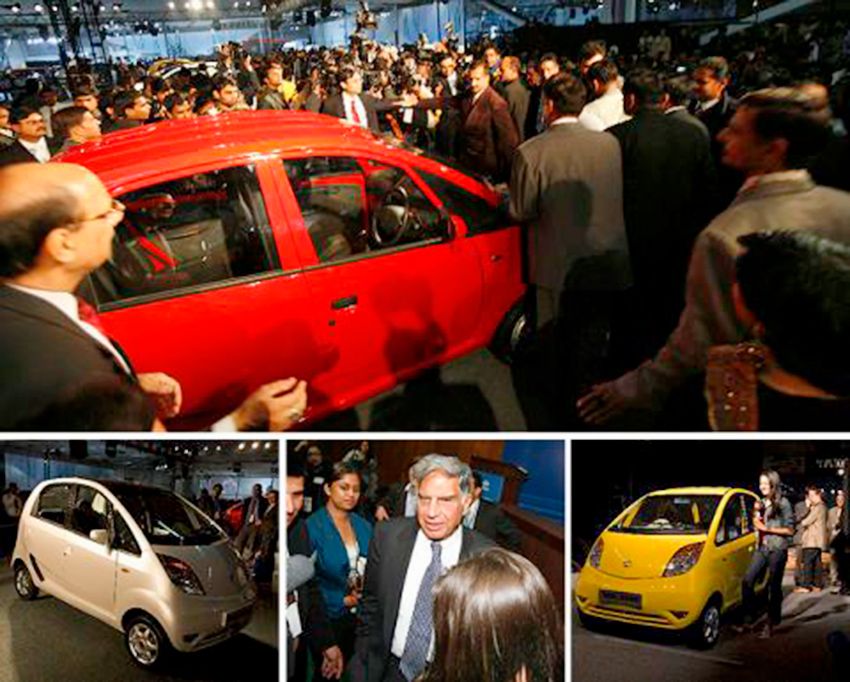
The head of the group RATAN Tata through the Nano received in 2008 your "5 minutes of world fame"
The debut of the 2-cylinder 33-horsepower rear-engined sedan, the Tata Nano at the auto show in new Delhi in January 2008 when out of the car at the presentation came the head of the group, RATAN Tata, was accompanied by the broadcast statements themselves as representatives of the company Tata Motor, and the hype in the media in the spirit: "the Indians have beaten the world car industry!", "India wiped his nose all world brands!" etcD., etc. Local media (not only yellow press, but by leading publications and TV channels) then it's just gone crazy from euphoria over his country's "leading position in the global automotive industry" and aired their denial all over the world. The reason for this was not technical or technological advantages of the new product, but purely the price tag on which was written the coveted for Indians the figure "100 lakh", i.e., 100,000 rupees, which was then at an exchange rate of just $ 2,500! The cheapest car in the world! A new car for the price of a scooter! Remember, even in Runet many credulity of punishing the domestic auto industry for the lack of a similar low cost product. Excited for such unprecedented strength and inclusiveness of the public reaction to a new product in Indian automobile industry leaders Tata Motor said that literally de whole of India will soon be moved from motorcycles, scooters and the stories of tuk tuks on the Nano in the near future release of the Nano will exceed 250 000 a year, and later, and 1 000 000 copies per year, based on the wide export at least half of the countries of the world.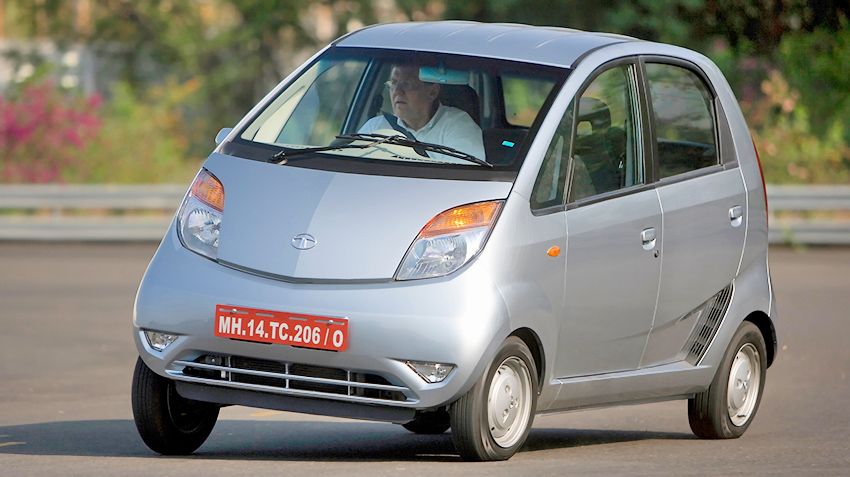
Europeans the Tata Nano could be of interest only as a technical curiosity
However, the tale is over faster than the first commodity cars arrived in Indian showrooms in July 2009. So, to start the construction area of the factory for the Nano in West Bengal went to mass peasant uprisings, as small farmers were simply driven from their holdings, to clear the site for construction, which the plant had to endure on the other end of the country to Mumbai.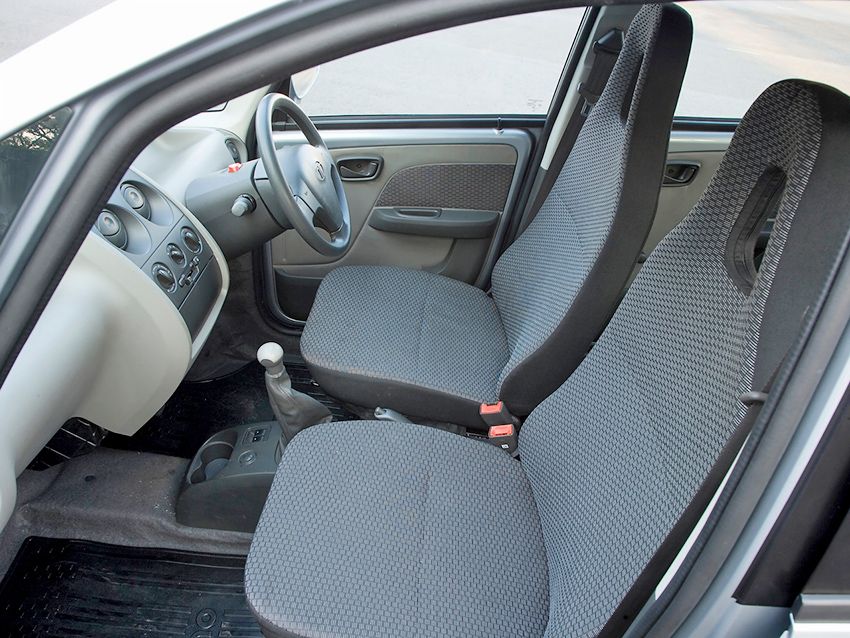
Salon Nano first editions differed Spartan equipment even against other models to the Indian automotive industry
Next, the first product Nano started to burn literally in flames due to "illegal connections" to the too thin side the wiring (e.g. radio), which led to the reviews, but initially undermined the credibility of the construction. After the elimination of childhood diseases, the production of such proverennoi model still unwound, but... "authoeize from Tata" fell victim to their own marketing strategies to maximize simplification and direct competition with the stories of tuk tuks, ie "redoubtable": ordinary Indians from their favorite two-wheeled scooters and not refused as the drivers are familiar and enduring as the mules of the stories of tuk tuks, well, more wealthy clients also remained faithful to a normal car, buying a Nano just as the "third vehicle" mainly for their wives mothers, etc. While Tata was not able to run a series of versions with automatic transmission and engines on diesel and gas fuel. Further, although the model was initially compatible with local norms for safety and environment, in 2014, crash test NCAP showed that Nano is not only the cheapest but also the most dangerous car in the world with a zero score. Accordingly, the annual production of the Nano has never reached even initially claimed ¼ million per year, and about the "million a year" no one in Tata Motyor is not remembered.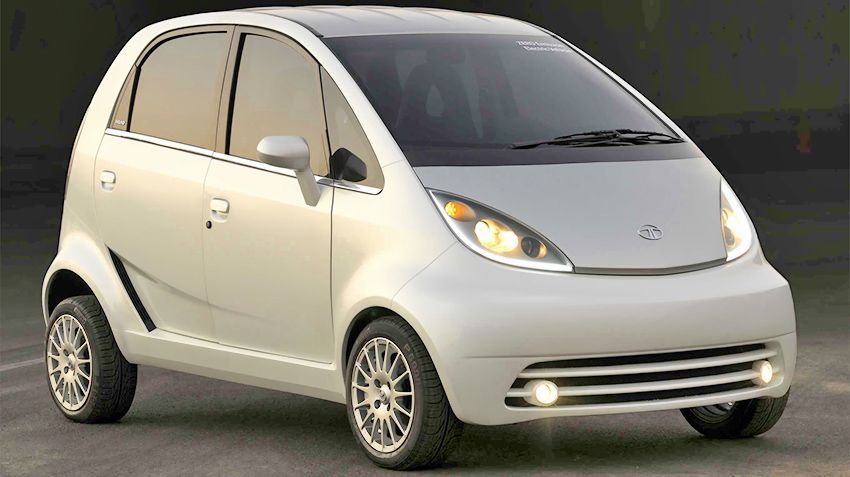
A concept electric Nano EV shown at Geneva'10
The export of Nano has been limited to neighboring countries in South Asia, although at the Geneva motor show the Tata and showed a regular "westernized" concepts "series Nano", however, the price with all mandatory safety package (airbags, ABS, EBD, etc.) already read off scale for €5,000 to 6,000, which means he was totally uncompetitive, so the Indians showed them more for self-affirmation.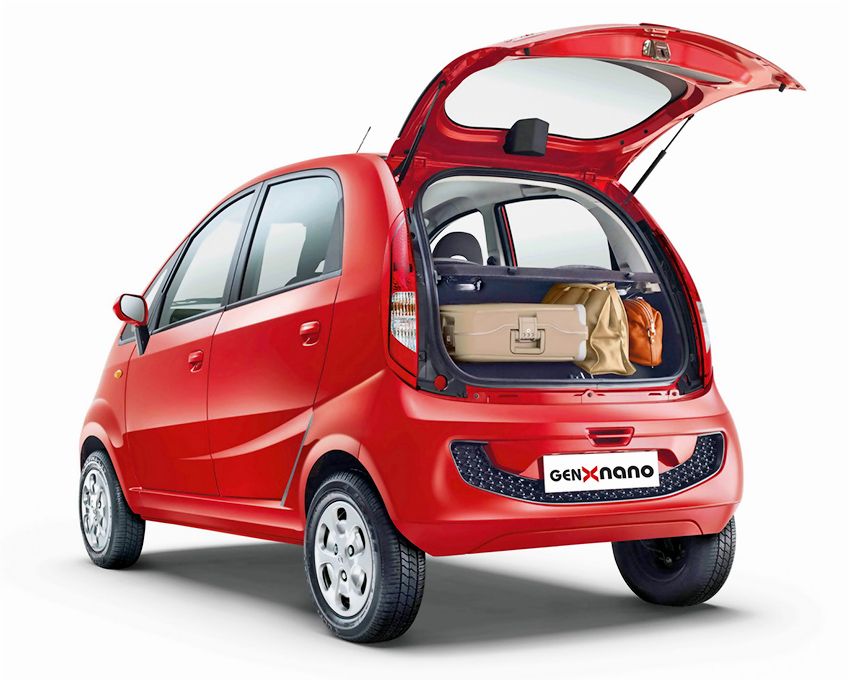
Fifth back door Tata Nano received only in 2015 (version GenX), but it did not save the sale
In the second half of 2010-x Nano sales began to drop steadily and at home, despite the appearance in 2015, the redesigned Nano GenX model with 5-door body (the door of the trunk at the rear-engined Nano initially was not provided).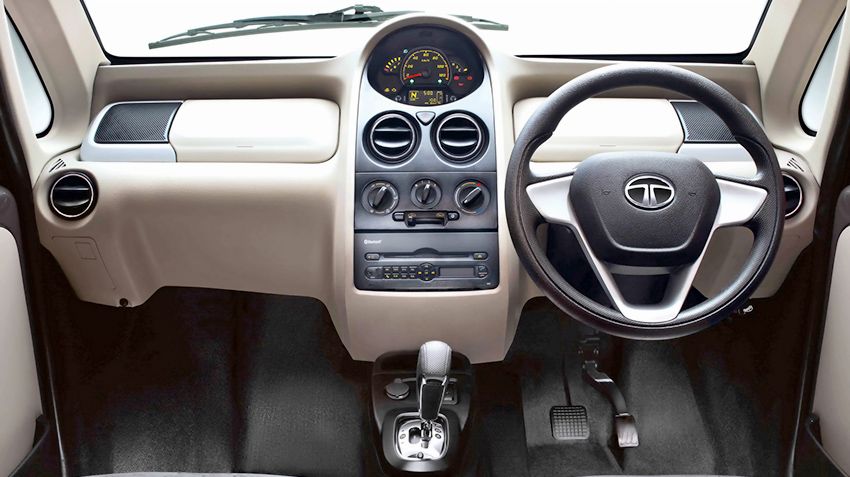
The interior
And now instead of having to arrange a proper send-off albeit unfortunate, but still a famous Indian car Tata Motor continues unsuccessfully to defend the "Esprit de corps".
P. P. S. by the Way, not only the hapless Tata Nano fell victim to tightening environmental regulations – three years earlier in the nothingness left of the iconic Indian taxi "Ambi" – frame sedan Hindustan Ambassador (produced by the British license without changes to the body since 1956), the same not undergoing transplantation, more environmentally friendly, but also more expensive engine.
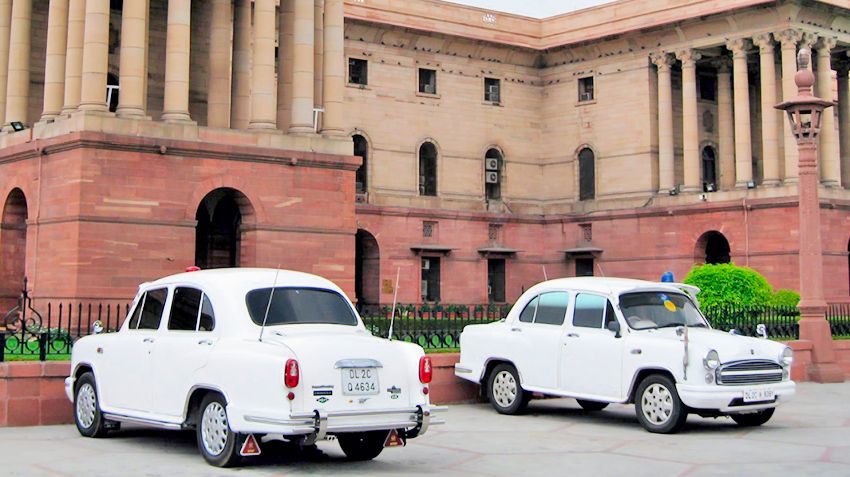
In the last decade, production Amby was only in the government of India and in a taxi
We may recall the domestic "Oka", which differed from the 2-cylinder engine from half of the "Samara", but forced to move to a more powerful 3-cylinder Chinese motor FAW fell victim to the ruble devaluation in the global financial crisis of 2008.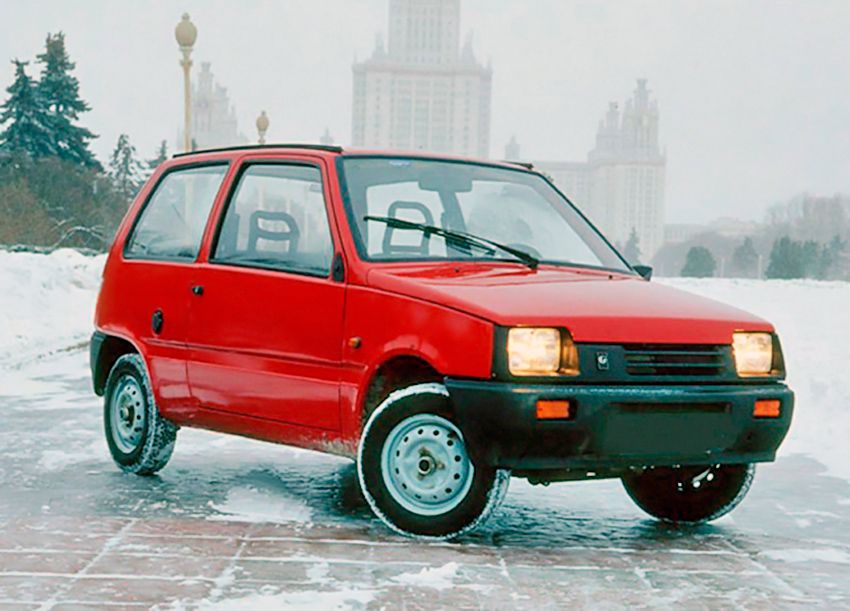
SeAZ-1116 Oka's with Chinese FAW motor was produced only in 2008 and left the market due to the collapse of the ruble
.
|
|
|
Element was not found.








